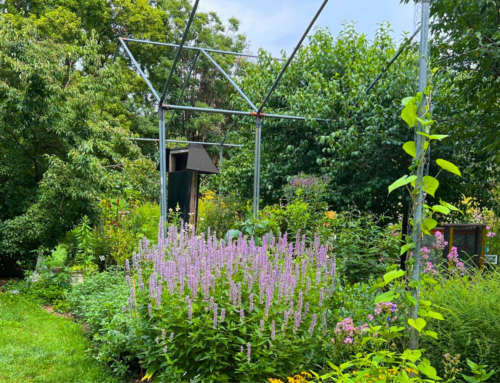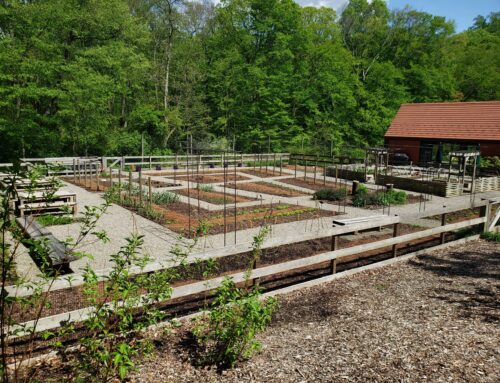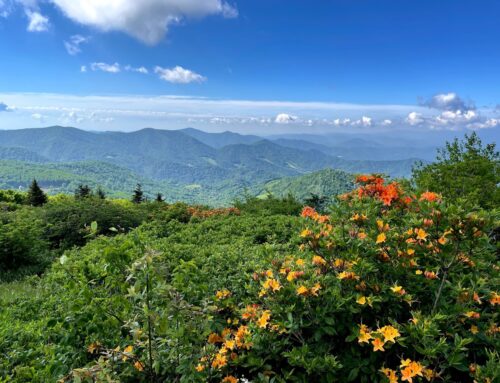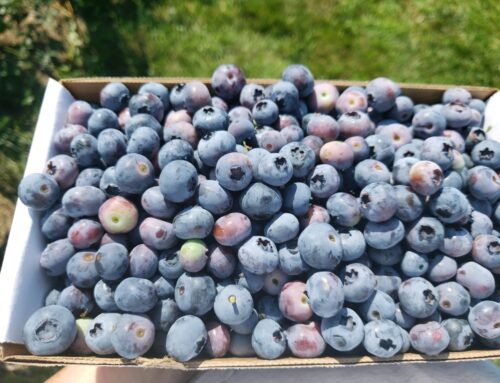As we head into life post-pandemic, we reflect upon the lessons learned.
- We all have a place in nature. This year, when our gates re-opened, our volunteers, members and visitors returned to explore our many trails, meadows and gardens. Nature sheltered us from the worries of the unknown. We began to share the Arboretum virtually, and perhaps what people saw on our electronic platforms encouraged them to visit Tyler. It may have been the video presentation on the Blue Trail woods, the Sounds of Tyler or the scenic wind-swept Serpentine Barren that piqued their interest. Perhaps it was the great scientific work at our Chestnut Orchard that grabbed their attention, or was it simply the call to return to a place that felt familiar and safe? The forests, fields and gardens of Tyler gave us the space to relax and reflect.
- Everyone needs help and everyone can give it. The Media Food Bank faced a huge surge in demand and Tyler was, and still is, in the position of helping with delicious, organic and well grown vegetables from Lucille’s Garden. We were able to do this with the help from a DELCO Strong grant and a partnership with PHS through HARVEST 2020.
- Don’t sweat the small stuff — work on what is needed. We quickly realized that school field trips, camp and events were not going to happen like before. Rather than wishing the pandemic away and waiting for better days to come, we staged an electronic Plant Sale, re-worked our visitor entry procedures and put together video tours of our meadows , Butterfly House and even our Kentucky coffee tree to feed the hearts and minds of a homebound community.
We now take these lessons and apply them to our priorities in 2021. Tyler is here to inspire people to become stewards of the natural world and in order to do that, we have to be the example. We “dig in” deeper in the care of the Arboretum by continuing the restoration work of our rare Serpentine Barren, forming a community of experts in tackling on-site runoffs and floods with a Water Management Program and ensuring that our Natural Areas are safer and used appropriately.
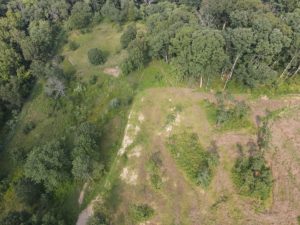
The following is the first of a series of blogs called “The View from the Top” — conversations with Executive Director, Mandy Santiago — to explore Tyler’s goals for 2021. In the first installment, Mandy expands upon the restoration of Pink Hill and the story behind what makes this patch of land so special. The series is authored by Richard Greenwood.
The View From the Top — The Serpentine Barren
By Richard Greenwood
You might think that an educated, experienced, dedicated and inquisitive Executive Director would have more on her mind than a patch of soil so saturated with plant-resistant compounds that it prevents most plants from taking hold, but Mandy Santiago, Executive Director of Tyler Arboretum, has placed attention on the Arboretum’s serpentine grassland among her priorities for 2021. I had to ask why.
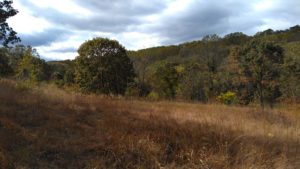
Mandy’s response was immediate and emphatic. What many people don’t know is that the “patch of soil” referred to so disparagingly, is Pink Hill, and Tyler’s Pink Hill is a geological treasure. In 1937, when the Arboretum was established, 14 acres were noted as being “barrens.” By “barrens” the founders meant that the soil was unable to support plants, animals and insects in the way that other areas of the Arboretum could. Its soil contained high concentrations of minerals, such as magnesium, nickel and chromium, and not enough of the nutrients (especially calcium) needed to support new growth. Aside from that, beneath the thin layer of soil was a rare, green-cast stone, named serpentinite.
The serpentine barrens, Pink Hill as they are called, are a geological rarity occurring only in patches, mostly in the northeast United States, and particularly in Maryland and southeast Pennsylvania. They are remnants of an ocean floor that was pushed up over 200 million years ago, when the African continent collided with the North American continent. Today those grasslands are quickly disappearing and even Tyler’s plot has been reduced — mostly taken over by spruce and juniper — from the original 14 acres to its present three acres. Under Mandy’s leadership, the restoration project, which has been underway since 2008, will continue to advance.
Pink Hill, however, is only one of several projects that Mandy has tagged as high priority. Stormwater management and its attendant problem, soil erosion, are high on her list of problems that must be resolved. In our next installment of “The View From the Top”, we’ll take a closer look at the causes and impact of this environmental dilemma.
So there you have it. In this series of conversations with Mandy, we’ll be taking a look at her priorities and coming to an understanding of some of the issues facing arboreta and public gardens in general. More importantly, we’ll delve into issues that are high on the list for Tyler Arboretum. If you have any questions or issues that you would like to see addressed here, please feel free to contact us by writing to Julia Lo Ehrhardt, Director of Community Engagement.
Stay safe. See you at the arboretum.



